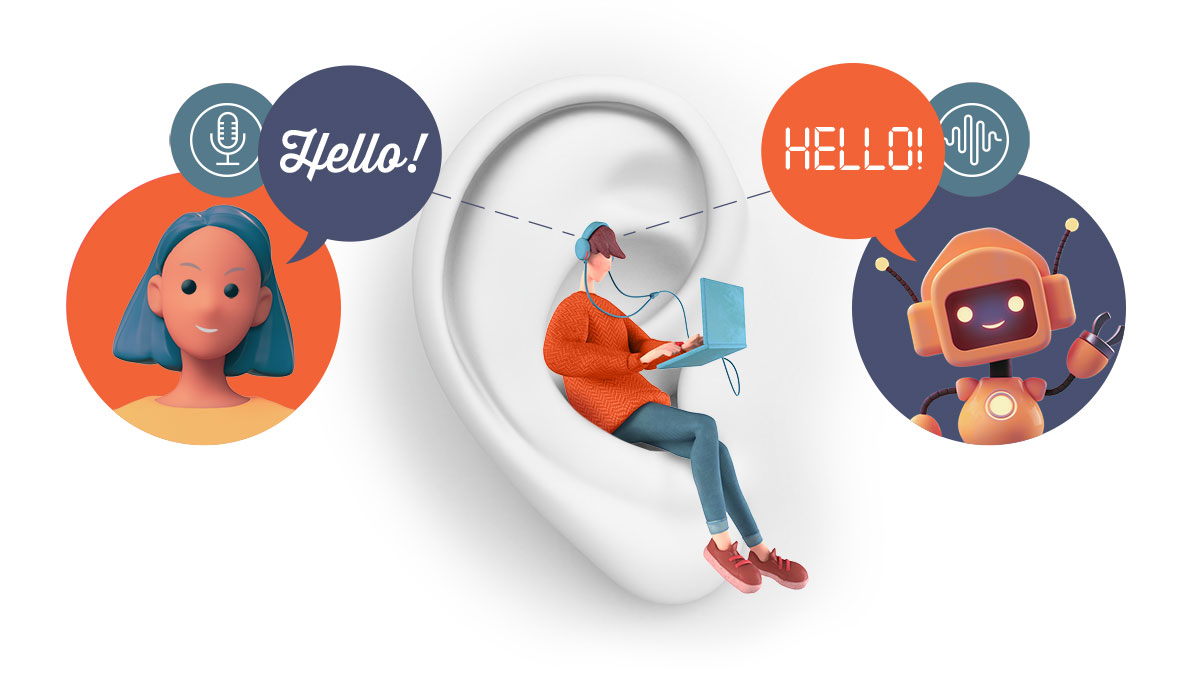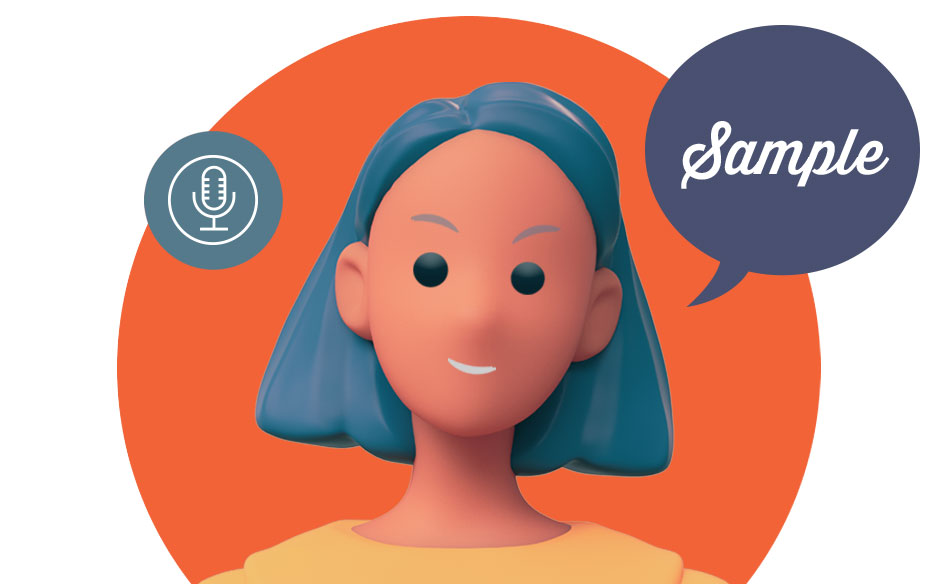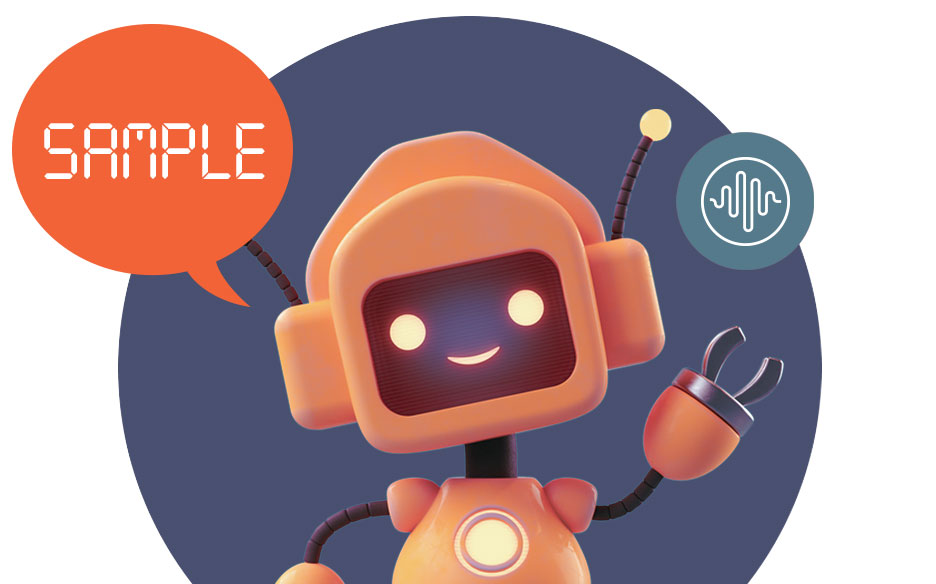So which voiceover option is best for your digital training? Let’s take a look at a few factors that can affect this contest of MAN VS. MACHINE! (Cue the Terminator music!)
The strengths of an AI voiceover:
Immediacy:
With text-to-speech (TTS) technology, we can go from script to audio with the click of a button. OK, in actuality, it’s not quite that easy. There’s still listening back and tweaking that has to be done. (Think about how Alexa can often mess up her ‘first take’ when you ask her to do something.) But there’s no question that generating a first-draft voiceover—or updating an existing voiceover—is a more convenient and economical process with AI voices. This brings us to our next AI strength…
Affordability:
We can pull high-quality AI voices from sources at a very affordable fee. If you have a limited budget and you’d rather invest those funds into animation, interactivity, etc., then an AI voice-over might be the choice for you.
The strengths of a professional voice talent:
Authenticity:
This one is pretty obvious. While AI voices are improving with smoother and more emotive voiceovers every day, they still aren’t as ‘real’ or as nuanced to our human ears as an actual person reading the lines. A skilled voice artist can make the audience feel like they are following along with a knowledgeable and passionate expert. And that can build a tone of trust with your digital training.
The Premium Experience:
It’s this superiority of expression and subtlety that will add a layer of ‘premium experience’ to your modules. Some lines, especially humor, can only be delivered by a voice talent, because an AI isn’t going to be able to give you that extra ‘oomph’ where it’s needed.
When is it best to use an AI voiceover?
If you have a tight budget
If your training requires shorter audio clips.
If you foresee that the training will go through several iterations in its lifetime. (For instance, if you’re training on equipment or software that will go through updates.)
If your audience is already accustomed to online curriculums. Experienced eLearners have probably gone through other trainings that use AI instructors, so they are less likely to be distracted by a voice that sounds slightly more ‘canned’ than human.
If your eLearning needs to be translated in multiple languages. Just make sure you can access multilingual proofers to confirm that the AI outputs sound correct.
When is it best to use a professional voice talent?
If you want to use audio clips that will go on—with no breaks—for 3 minutes or more. A voice talent can gradate their tone and accentuate phrases to help keep the audience interested and engaged through a long audio track.
If your materials could end up being ‘customer’ facing. Many eLearnings get repurposed and shared with external audiences—like app-users, third-party vendors, or potential customers who need quick information on a new product or service. If you think this might be the case for your eLearning, then you might choose to put your best foot forward with the ‘premium experience’ of a professional voice talent.
Human vs. AI… Which voiceover option is right for you and your eLearners? The good news is that both options are innovating rapidly to meet their perceived weaknesses. In addition to improving their expressive skills, AI voices now offer customizations for multilingual options, national dialects, pace of reading, intonation (friendly vs. informational, gender, and more. And voice talents are gathering onto online marketplaces where they are becoming more economical and responsive than ever before.
So that means better choices for you! So, no matter what you choose (and if you’re using the right partner), you can still efficiently produce high-quality, effective results! Set up a call with us today, and let’s discuss your eLearning options.
 Listen up!
Listen up!


